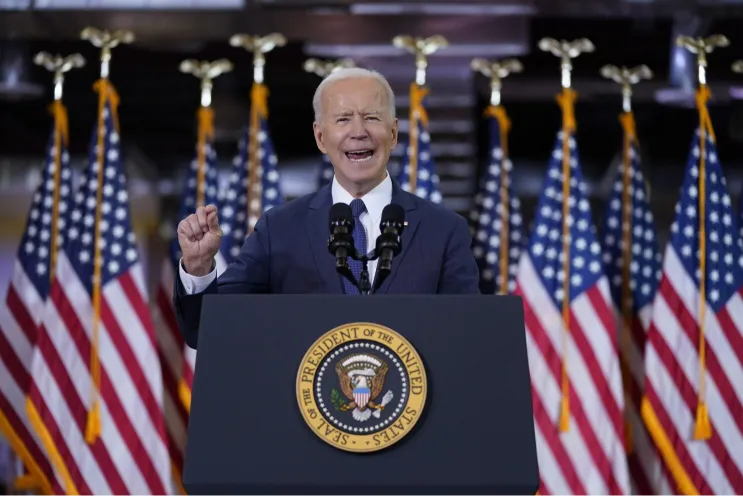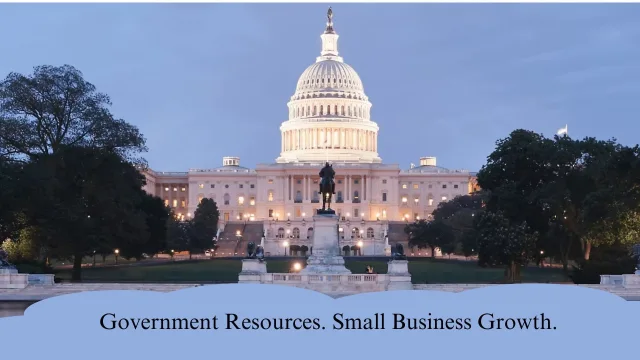trending
neon
Cirque du Soleil offers summer ticket deals
dining out
Celebs ditch the Strip for iconic Henderson restaurant
july 
trending
neon
Cirque du Soleil offers summer ticket deals
dining out
Celebs ditch the Strip for iconic Henderson restaurant
july 

The Biden administration has announced a comprehensive infrastructure investment plan aimed at revitalizing America's transportation, energy, and water systems. This article provides key insights into the plan's objectives, funding allocations, and anticipated impacts on the nation's economy and communities




In a significant move to bolster the nation's infrastructure, the Biden administration has introduced a multifaceted investment plan designed to address critical needs across transportation, energy, and water sectors. This initiative reflects the administration's commitment to modernizing America's foundational systems, promoting economic growth, and enhancing the quality of life for its citizens.
The plan allocates substantial funding to upgrade the nation's transportation network, including roads, bridges, and public transit systems. A notable $62 billion has been designated for Fiscal Year 2025, marking an $18.8 billion increase compared to Fiscal Year 2021. This investment aims to reduce congestion, improve safety, and support economic development by ensuring efficient movement of goods and people.
Federal Highway Administration
Recognizing the growing energy demands, particularly from the tech sector, the plan emphasizes investments in reliable and affordable electricity. This includes support for nuclear power as a clean energy source to meet the increasing needs driven by advancements in artificial intelligence and other technologies. The administration aims to modernize the energy grid and promote sustainable energy solutions.
The administration has committed $3.6 billion for water infrastructure improvements in Fiscal Year 2025. Combined with previous allocations, this totals $6.2 billion aimed at upgrading wastewater management systems, protecting freshwater resources, and ensuring safe drinking water access. These investments are crucial for public health and environmental sustainability.
Environmental Protection Agency
The infrastructure plan is part of the broader Investing in America agenda, which has authorized $1.2 trillion for transportation and infrastructure spending, with $550 billion dedicated to new investments and programs. This comprehensive approach is designed to stimulate economic growth, create jobs, and enhance the nation's competitiveness on a global scale.
Job Creation: The plan is expected to generate employment opportunities across various sectors, including construction, engineering, and technology.
Economic Growth: Improved infrastructure facilitates efficient commerce, reduces operational costs for businesses, and attracts investments.
Environmental Sustainability: Investments in clean energy and water systems aim to reduce the nation's carbon footprint and promote ecological health.
Enhanced Quality of Life: Upgraded infrastructure leads to safer transportation, reliable utilities, and improved public services for communities nationwide.
The Biden administration has announced a comprehensive infrastructure investment plan aimed at revitalizing America's transportation, energy, and water systems. This article provides key insights into the plan's objectives, funding allocations, and anticipated impacts on the nation's economy and communities
the latest

Mergers and Acquisitions Surge in U.S. Despite Economic Uncertainty
Despite economic challenges, mergers and acquisitions (M&As) in the U.S. business sector have surged. Companies are leveraging strategic deals to enhance market presence, expand operations, and drive growth in a volatile economic landscape

U.S. Companies Respond to Labor Shortages with Automation and Technology
As labor shortages continue to impact various industries, U.S. companies are accelerating the adoption of automation and technology. From AI-driven customer service to robotic manufacturing, businesses are leveraging innovative solutions to maintain productivity and efficiency

Stock Buybacks and the Impact on Corporate Investments in the U.S.
Stock buybacks have become a dominant strategy for U.S. corporations, influencing investment decisions, shareholder returns, and economic growth. While buybacks boost stock prices and reward investors, critics argue they divert funds from research, expansion, and employee wages

Small Business Investment: Government Initiatives to Drive Growth
The U.S. government has launched new initiatives to increase investment in small businesses, aiming to drive economic growth and innovation. These policies include tax incentives, grants, and funding programs designed to support entrepreneurs and startups

Venture Capital Investment in Startups Reaches New Heights in 2025
Venture capital investment in startups has surged to unprecedented levels in 2025, fueling innovation across various industries. With increased funding, early-stage companies are experiencing rapid growth, particularly in technology, healthcare, and green energy sectors

Corporate America Faces Challenges Amid Global Supply Chain Disruptions
Global supply chain disruptions continue to challenge Corporate America, affecting production, pricing, and consumer demand. As businesses navigate logistical bottlenecks, rising costs, and geopolitical tensions, the U.S. economy faces significant hurdles in maintaining stability and growth

Biden Administration Unveils New Infrastructure Investment Plan
The Biden administration has announced a comprehensive infrastructure investment plan aimed at revitalizing America's transportation, energy, and water systems. This article provides key insights into the plan's objectives, funding allocations, and anticipated impacts on the nation's economy and communities

Understanding U.S. Investment Policies and Their Impact
Explore how U.S. investment policies shape financial markets, economic growth, and business strategies, offering both opportunities and challenges for investors

The Link Between U.S. Investment Policies and Economic Growth
Recent U.S. investment policies are driving economic growth, influencing global markets, trade, and financial stability. This article explores their impact on businesses and investors